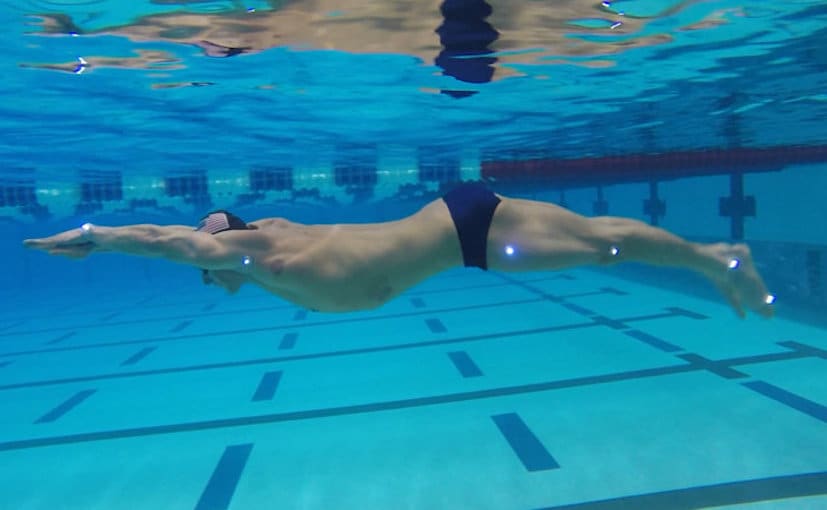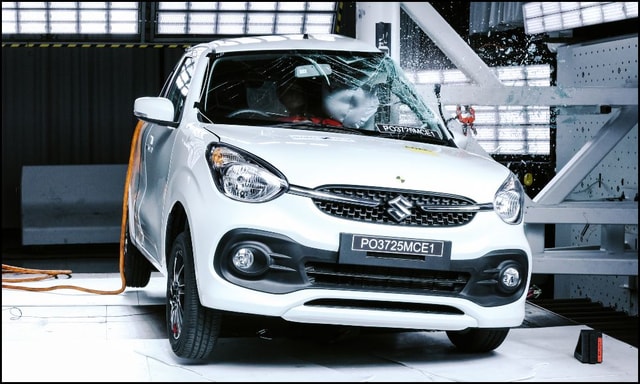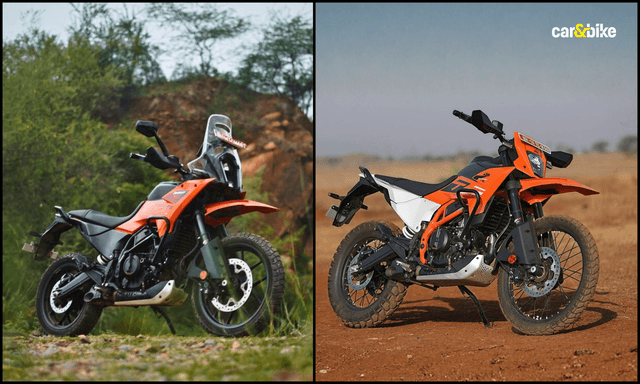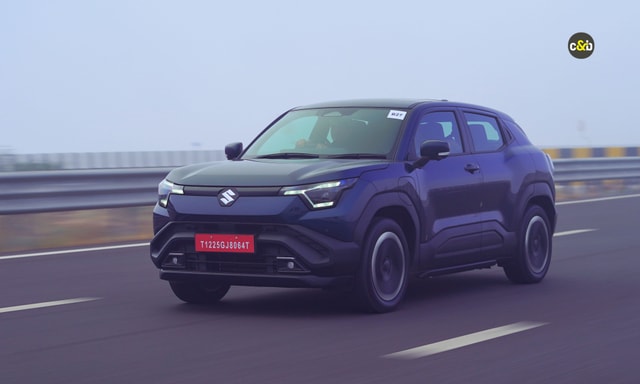How BMW's Tech Helped American Swimming Team Win Gold At Rio Olympics
Sameer Contractor
1 min read
Aug 12, 2016, 07:30 PM

Key Highlights
- BMW's autonomous driving technology helped train the athletes
- The tech helps provide more accurate data about the athlete's movements
- American swimmer Michael Phelps has won 22 gold medals in Olympics
The American Swimming team has grabbed up to twenty four medals at the Rio Olympics with star swimmer Michael Phelps having won his 22nd Olympic gold as well. While that is commendable feat to achieve, little did we know that car maker BMW has had a significant role to play in the team's success. The German car maker has been instrumental in helping the American swimming team perform well in the 2016 Summer Olympics.
BMW is helping the US Swimming athletes train for the Olympics. The athletes are using the automaker's autonomous driving technology to improve and enhance their training skills. Being a time-based event, athletes need to shave off every second possible from their time and improving on every little manoeuvre comes to their advantage.
The athletes use customised technology adapted from the LED lighting system seen on BMW's autonomous vehicles. Much like the car that uses the system to track movements of objects and obstacles on road; the LEDs are strapped to the swimmer's wrists, shoulders, hips, knees, ankles and toes using 3D-printed mounts. Concurrently, an underwater camera uses motion-tracking technology to break down the swimmer's movements. This, in turn, helps the swimmer to understand how he can improve his performance.
Interestingly, this isn't the first time the US Swimming team adopted BMW autonomous driving technology. The team had trained for the 2012 London Olympics using similar albeit older version of autonomous driving tech. Obviously, the latest version offers more accurate results, and does not feel intrusive to the swimmer either. Certainly, it does get to hard to comprehend at times the vast applications of technology.
Apart from its involvement with the US Swimming team, BMW has been more actively involved in the Olympics on different levels. The automaker previously developed a racing wheelchair for the Rio Paralympics, while a two-man bobsled was also made for the 2014 Sochi Winter Olympics.
BMW is helping the US Swimming athletes train for the Olympics. The athletes are using the automaker's autonomous driving technology to improve and enhance their training skills. Being a time-based event, athletes need to shave off every second possible from their time and improving on every little manoeuvre comes to their advantage.
The athletes use customised technology adapted from the LED lighting system seen on BMW's autonomous vehicles. Much like the car that uses the system to track movements of objects and obstacles on road; the LEDs are strapped to the swimmer's wrists, shoulders, hips, knees, ankles and toes using 3D-printed mounts. Concurrently, an underwater camera uses motion-tracking technology to break down the swimmer's movements. This, in turn, helps the swimmer to understand how he can improve his performance.
Interestingly, this isn't the first time the US Swimming team adopted BMW autonomous driving technology. The team had trained for the 2012 London Olympics using similar albeit older version of autonomous driving tech. Obviously, the latest version offers more accurate results, and does not feel intrusive to the swimmer either. Certainly, it does get to hard to comprehend at times the vast applications of technology.
Apart from its involvement with the US Swimming team, BMW has been more actively involved in the Olympics on different levels. The automaker previously developed a racing wheelchair for the Rio Paralympics, while a two-man bobsled was also made for the 2014 Sochi Winter Olympics.
Trending News
 1 min readYamaha YZF-R2 Name Trademarked In India
1 min readYamaha YZF-R2 Name Trademarked In India
Latest News
 car&bike Team | Dec 22, 2025Maruti Suzuki Celerio Secures Three-Star Rating In Global NCAP Crash TestsSix airbags-equipped model secured a three-star adult and two-star child occupant protection rating; the dual airbag model scored a two-star rating.3 mins read
car&bike Team | Dec 22, 2025Maruti Suzuki Celerio Secures Three-Star Rating In Global NCAP Crash TestsSix airbags-equipped model secured a three-star adult and two-star child occupant protection rating; the dual airbag model scored a two-star rating.3 mins read car&bike Team | Dec 22, 2025KTM 390 Adventure X, 390 Enduro R Recalled Over Side Stand IssueKTM has issued a global recall for select 390 models after identifying a side stand spring failure caused by engine vibrations.2 mins read
car&bike Team | Dec 22, 2025KTM 390 Adventure X, 390 Enduro R Recalled Over Side Stand IssueKTM has issued a global recall for select 390 models after identifying a side stand spring failure caused by engine vibrations.2 mins read Carandbike Team | Dec 22, 2025Tata Harrier, Safari Petrol Variant Details Revealed: Get New Range Topping Ultra TrimThe much-awaited petrol variants of the Harrier and Safari are powered by a more powerful iteration of the 1.5 turbo-petrol engine from the Sierra.1 min read
Carandbike Team | Dec 22, 2025Tata Harrier, Safari Petrol Variant Details Revealed: Get New Range Topping Ultra TrimThe much-awaited petrol variants of the Harrier and Safari are powered by a more powerful iteration of the 1.5 turbo-petrol engine from the Sierra.1 min read Jaiveer Mehra | Dec 21, 2025New Limited-Run Ducati Panigale V4 Marquez 2025 World Champion Replica RevealedSpecial edition Panigale V4 commemorates Marc Marquez's 2025 MotoGP Rider’s title.1 min read
Jaiveer Mehra | Dec 21, 2025New Limited-Run Ducati Panigale V4 Marquez 2025 World Champion Replica RevealedSpecial edition Panigale V4 commemorates Marc Marquez's 2025 MotoGP Rider’s title.1 min read car&bike Team | Dec 21, 2025KTM To Host First Adventure Rally In India In Feb 2026KTM also announced a third season of its KTM Cup for India, which commences in January 2026.1 min read
car&bike Team | Dec 21, 2025KTM To Host First Adventure Rally In India In Feb 2026KTM also announced a third season of its KTM Cup for India, which commences in January 2026.1 min read car&bike Team | Dec 20, 2025KTM 390 Adventure R To Be Launched In January 2026Bookings for the KTM 390 Adventure R are expected to open very soon, wit deliveries beginning in January 2026.2 mins read
car&bike Team | Dec 20, 2025KTM 390 Adventure R To Be Launched In January 2026Bookings for the KTM 390 Adventure R are expected to open very soon, wit deliveries beginning in January 2026.2 mins read
 Seshan Vijayraghvan | Dec 22, 20252026 Tata Harrier & Safari 1.5 Hyperion Review: By The Power Of Petrol!The new Tata Harrier and Safari petrol packs a new 1.5-litre TGDI Hyperion engine, but is it an ideal alternative to the diesel version?7 mins read
Seshan Vijayraghvan | Dec 22, 20252026 Tata Harrier & Safari 1.5 Hyperion Review: By The Power Of Petrol!The new Tata Harrier and Safari petrol packs a new 1.5-litre TGDI Hyperion engine, but is it an ideal alternative to the diesel version?7 mins read Bilal Firfiray | Dec 19, 2025Maruti Suzuki e-Vitara Review: Worth The Wait?After a long wait, the first-ever electric Maruti Suzuki is here. It’s the e-Vitara, and it comes with a few promises. But arriving this late, is it worth the wait? Or is it a case of too little, too late?9 mins read
Bilal Firfiray | Dec 19, 2025Maruti Suzuki e-Vitara Review: Worth The Wait?After a long wait, the first-ever electric Maruti Suzuki is here. It’s the e-Vitara, and it comes with a few promises. But arriving this late, is it worth the wait? Or is it a case of too little, too late?9 mins read Bilal Firfiray | Dec 18, 2025Mercedes-Benz G450d: The Subtle Power of EvolutionThe Mercedes-Benz G 450d evolves subtly with more power, improved efficiency, and modern tech, while staying true to the timeless G-Class design. And character.4 mins read
Bilal Firfiray | Dec 18, 2025Mercedes-Benz G450d: The Subtle Power of EvolutionThe Mercedes-Benz G 450d evolves subtly with more power, improved efficiency, and modern tech, while staying true to the timeless G-Class design. And character.4 mins read Janak Sorap | Dec 11, 2025Harley-Davidson X440 T First Ride Review: Smarter and SharperHarley-Davidson has taken the X440 and given it a more focused and engaging twist. The result is the X440 T—essentially the same platform but updated in areas that give the motorcycle more appeal and riders more thrill.5 mins read
Janak Sorap | Dec 11, 2025Harley-Davidson X440 T First Ride Review: Smarter and SharperHarley-Davidson has taken the X440 and given it a more focused and engaging twist. The result is the X440 T—essentially the same platform but updated in areas that give the motorcycle more appeal and riders more thrill.5 mins read Shams Raza Naqvi | Dec 10, 20252025 Mini Cooper Convertible Review: More Colour On Indian RoadsThe updated Mini Cooper Convertible is set to be launched in the Indian market in the next few days. We drive it around Jaisalmer for a quick review.5 mins read
Shams Raza Naqvi | Dec 10, 20252025 Mini Cooper Convertible Review: More Colour On Indian RoadsThe updated Mini Cooper Convertible is set to be launched in the Indian market in the next few days. We drive it around Jaisalmer for a quick review.5 mins read

















































































































































